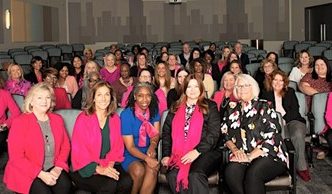Training your front-line employees to spot financial exploitation is becoming increasingly crucial – both to your bottom line and in protecting your membership.
Trisha Hernandez has seen that first hand as director of risk management at LGE Community Credit Union.
“The number of potential cases of elderly exploitation that LGE typically reports per year varies. However, preying on the elderly does appear to be on the rise,” Hernandez said. “In 2018, LGE reported on nine potential cases, whereas in 2017, the credit union reported four cases.”
Nationally, the numbers are even more alarming. According to research from the National Adult Protective Services Association, one in nine elder adults reported being abused, neglected or exploited in the past year. Financial exploitation was a particularly prevalent form of elder abuse, with one in 20 older adults indicating they had been in some way financially mistreated in the past.
And that number is likely just the tip of the iceberg. The National Adult Protective Services Association found that only one in 44 cases of financial abuse is ever reported.
That’s where financial institutions – and credit unions in particular – can shine.
“Credit unions are normally familiar with their elderly members’ transaction patterns and are likely one of the first to notice if there is a change to the pattern,” Hernandez said. “We also become familiar with the family member and/or caregiver that helps the elderly member with their banking needs and take notice if the member starts to visit the institution with new individuals.”
But having a well-trained front-line staff can be key to accomplishing that level of detection.
“Providing training to member-facing staff is extremely important,” Hernandez said. “A change in appearance of an elder is considered one of the first signs to help in the identification of elder exploitation – and credit union tellers see the same members often enough to be able to detect these changes.”
The importance of training to spot elder financial exploitation isn’t just anecdotal. A study by the AARP found that dedicated training significantly strengthens financial institutions’ ability to stop financial exploitation. The organization formed its own training program, known as AARP BankSafe Training. It found that more than four times the number of suspected incidents of financial exploitation were reported by those who received BankSafe training versus those who had not.
Hernandez said LGE provides training to all staff every other year.
“Additional training is provided to staff that are responsible for the reporting of elder exploitation,” she said. “Staff responsible for reporting exploitation or abuse just complete the At-Risk Adult Crime Tactics certification seminar provided by the Georgia Department of Human Services Division of Aging Services.”
For more information on elderly financial exploitation, check out this Detroit Free Press article.
More information can also be found at the Georgia Department of Human Services Division of Aging Services, the Alabama Department of Senior Services and the State of Florida Department of Elder Affairs.





